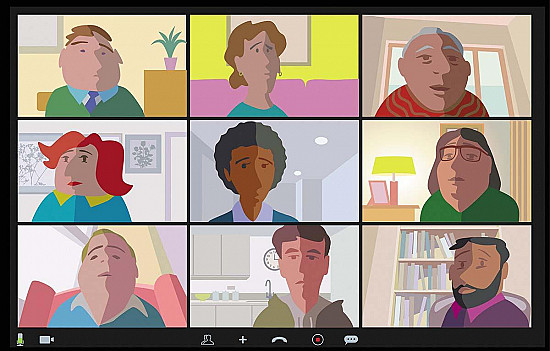
5 timeless habits for better health

What are the symptoms of prostate cancer?

Is your breakfast cereal healthy?

When pain signals an emergency: Symptoms you should never ignore

Does exercise give you energy?

Acupuncture for pain relief: How it works and what to expect

How to avoid jet lag: Tips for staying alert when you travel

Biofeedback therapy: How it works and how it can help relieve pain

Best vitamins and minerals for energy

Should you take probiotics with antibiotics?
Telehealth: The advantages and disadvantages

Normally, doctors and other health care providers care for their patients in person at a facility such as a medical office, clinic, or hospital. But thanks to computers, smartphones, and other new digital technologies, medical professionals can now diagnose, treat, and oversee their patients' care virtually.
Telehealth is defined as the delivery of health care services at a distance through the use of technology. It can include everything from conducting medical visits over the computer to monitoring patients' vital signs remotely. Its definition is broader than that of telemedicine, which only includes the remote delivery of health care. Telehealth also includes the training and continuing education of medical professionals.
Telehealth can be delivered in one of three ways:
- Synchronous: when the doctor communicates with the patient in real time via computer or telephone
- Asynchronous: when data, images, or messages are recorded to share with the doctor later
- Remote patient monitoring: when measurements such as weight or blood pressure are sent to the health care provider.
Advantages of telehealth
Using technology to deliver health care has several advantages including cost savings, convenience, and the ability to provide care to people with mobility limitations, or those in rural areas who don't have access to a local doctor or clinic. For these reasons, the use of telehealth has grown significantly over the last decade. Currently, 76% of hospitals in the U.S. connect doctors and patients remotely via telehealth, up from 35% a decade ago.
Telehealth has become even more essential during the coronavirus (COVID-19) pandemic. Fears of spreading and catching the virus during in-person medical visits have led to a greater interest in, and use of, technology to provide and receive health care.
Almost three-quarters of Americans surveyed said the pandemic has made them more eager to try virtual care. And one in four Americans over age 50 said they'd had a virtual health care visit during the first three months of the pandemic, up from just 4% of older adults who'd had a remote visit the previous year.
What you can do with telehealth
All of the following activities and services are possible with the help of telehealth:
- Recording measurements like your weight, food intake, blood pressure, heart rate, and blood sugar levels, either manually or through a wearable device, and sending them to your doctor
- Having a virtual visit with your doctor or a nurse over your computer or smartphone
- Using an online portal to check your test results, request prescription refills, send your doctor a message, or schedule an appointment
- Sharing information such as your test results, diagnoses, medications, and drug allergies with all of the providers you see
- Coordinating care between your primary care provider and any specialists you visit — including the sharing of exam notes and test results between medical offices in different locations
- Getting email or text reminders when you're due for mammograms, colonoscopies, and other screenings, or routine vaccinations
- Monitoring older adults at home to make sure they are eating, sleeping, and taking their medications on schedule.
Downsides to telehealth
Telehealth offers a convenient and cost-effective way to see your doctor without having to leave your home, but it does have a few downsides.
- It isn't possible to do every type of visit remotely. You still have to go into the office for things like imaging tests and blood work, as well as for diagnoses that require a more hands-on approach.
- The security of personal health data transmitted electronically is a concern.
- While insurance companies are increasingly covering the cost of telehealth visits during the COVID-19 pandemic, some services may not be fully covered, leading to out-of-pocket costs.
Image: © Jacob Wackerhausen/Getty Images
Disclaimer:
As a service to our readers, Harvard Health Publishing provides access to our library of archived content. Please note the date of last review or update on all articles.
No content on this site, regardless of date, should ever be used as a substitute for direct medical advice from your doctor or other qualified clinician.

5 timeless habits for better health

What are the symptoms of prostate cancer?

Is your breakfast cereal healthy?

When pain signals an emergency: Symptoms you should never ignore

Does exercise give you energy?

Acupuncture for pain relief: How it works and what to expect

How to avoid jet lag: Tips for staying alert when you travel

Biofeedback therapy: How it works and how it can help relieve pain

Best vitamins and minerals for energy

Should you take probiotics with antibiotics?
Free Healthbeat Signup
Get the latest in health news delivered to your inbox!
Sign Up




